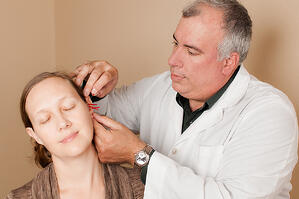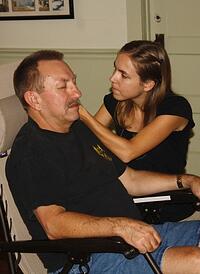John Howard is a licensed acupuncturist who started his career in Western medicine. He trained & served with the U.S. Marine Corps, as a Combat Medic & a certified EMT.
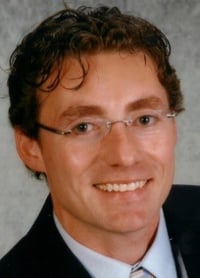
He was chosen to attend the Army's Delta Special Operations School of Medicine to become a Corpsman and the Uniformed Services University of Health Sciences where he trained in field surgical techniques. At George Washington Univ. Hospital he worked as an ER Trauma Technician.and as an Asst. Adjunct Professor of Emergency Medicine teaching medical students minor trauma and suturing techniques. John Howard then completed his degree in acupuncture from the Maryland Institute of Traditional Medicine in Bethesda, Maryland in 2004, and is nationally certified by NCCAOM.
After completing his degree, Prof Howard did a five-year fellowship with the US military under the direction of Dr. Richard Niemtzow, MD, PhD. It included working with Wounded Warriors only days removed from the battlefield.
John has gone on to create protocols for PTSD used worldwide and lactation that has become a staple method used to increase lactation production in a nationally acclaimed hospital. John maintains a private practice in Germantown, Maryland specializing in pain management, musculoskeletal and neurological disorders, sports medicine and sports related injuries. John travels around the world to bring his teachings to acupuncturists nationally and internationally. He has also authored nine books and 25 articles on both Acupuncture & Auriculotherapy.
John, have you always wanted to work in medicine?
One of the first things I wanted to do was practice acupuncture. In 1990, my senior year in high school, I went out for a long run. I returned home much later than I expected and before I went to bed, I laid on my living room floor to cool down. While I was doing this, I watched a TV show on acupuncture. The show was filmed in China and they were using acupuncture for anesthesia while they performed open heart surgery on a patient. At that point I wasn't sure if what they were doing was magic or medicine, but I knew I wanted to be part of that.
Next morning when I woke, I approached my mother and told her my plan to study acupuncture. I thought she would be happy and excited because at that time I planned to become professional runner and live in the basement for the next 30 years. When I told her, she looked at me and said, “You don't even look Chinese. Eating Chinese food doesn't qualify you. Are you nuts? Please don't tell your stepfather because he'll think we're both doing drugs.”
How did your time in the military shape you as an acupuncturist? What are unique challenges and benefits of working for the military?
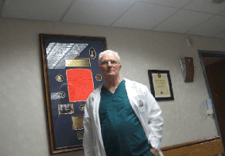 It helped me out tremendously and plays a major role in how I practice acupuncture, even today. I was a Navy Corpsman who was selected for the US Army’s elite 18 Delta School for Medics. I dealt with a lot of pain in the military and a large part of my practice is dedicated to treating pain.
It helped me out tremendously and plays a major role in how I practice acupuncture, even today. I was a Navy Corpsman who was selected for the US Army’s elite 18 Delta School for Medics. I dealt with a lot of pain in the military and a large part of my practice is dedicated to treating pain.
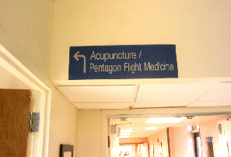
There are many benefits to working with the military. One of those is that acupuncture is part of standard care, meaning if you want narcotics you also have to receive acupuncture, or you will not get any narcotics. Another benefit is using acupuncture in medical departments on base that are not used in their civilian counterparts. For example, when I was at Bethesda Naval Hospital some years ago, we would use acupuncture in the PAU (post anesthesia unit). These surgical patients might receive acupuncture prior to surgery or just after surgery. You don't find many hospitals using acupuncture in surgery or in the PAU. This was a unique opportunity to be a part of and witness firsthand.
Were you familiar with NADA before your fellowship with Dr. Richard Niemtzow? What differentiates Battlefield Acupuncture (BFA) to NADA? Is there any overlap?
They have some things in common, they are both auriculotherapy protocols. Each protocol has five ear points, though with BFA I hardly ever have to use more than a total of 3 to 5 needles, whereas with NADA you always use 10 needles. With BFA you stop when the patient reaches the desired pain level. NADA and the BFA protocols use different needles. Also, the BFA protocol will use a combination of gold, stainless steel and titanium needles to achieve the ultimate desired level of decreased pain.
Do you prefer one protocol over the other?
It depends on the purpose of the treatment. For example, I do prefer to use the NADA protocol if my patient is already off narcotics and experiencing no pain other than withdrawal symptoms. If my patient is still on narcotics or being weaned off narcotics and still has pain, then I use the BFA protocol. With BFA, the needles will stay in from 3 to 5 days. In France where the BFA needles are made, professionals will leave the needles in for upwards of 40 days. Here we think 3 to 5 days is enough to get the desired outcome.
Over the years working with disabled combat vets I found a good mix of using NADA and BFA simultaneously. This is mostly for patients who have mild to severe hyper vigilance. Sometimes using BFA needles will over stimulate these patients. I found that if I combined both protocols it balances them out. This is done by inserting filiform needles for the BFA points on the patient’s dominant side and the NADA protocol points on the patient’s non-dominant side.
I’ve read a pretty nasty article on Forbes about BFA, from 2011. Has that attitude towards alternative medicine changed at all in the past 8 years in your opinion?
First, I think that was a great opportunity to advanced BFA and acupuncture in general. Forbes magazine is a very large magazine there's a lot of subscriptions and some clout.
The article that you were referring to was written by Stephen Barrett who in 1993 was forced to give up his medical license in Pennsylvania. It is common knowledge that Stephen Barrett has been Officially Declared by the US Court System, in a published Appeals Court Decision (NCAHF v King Bio), to be "biased, and unworthy of credibility." Officially - nothing he says can be legally relied upon. The Psychiatric profession rejected Barrett; he could not pass the examinations necessary to become Board Certified.
I believe that article did more good than bad to advance the reputation of BFA.
Have you seen any changes in interactions you have in clinic with your patients or demographics since we have nationally focused on the opioid crisis?
You might have thought I would have said yes, but here in Maryland, those who prescribe opioids have been ahead of this trend for some time now. Though I still have patients who have scripts for opioids, most are taking them on a PRN basis and others are off them completely.
I’m not seeing the abuse that other parts of the country are experiencing. Perhaps it’s because acupuncture is more accessible and accepted in the Washington, DC Metro area. Most insurance companies in the area have some form of acupuncture coverage (and pay very well), so maybe this is why I don’t see what the rest of the United States is seeing.
Do you work alongside GP for the most part?
I'm at Walter Reed Army hospital as a volunteer where they have three different departments in the hospital that use BFA, acupuncture and homeopathy. I work alongside Dr. Steve Sharp, a pediatric neurology doctor in charge of one of the acupuncture departments. He is also a retired Air Force Colonel.
I also worked in a chiropractic office for 8 years and they would send patients to me for treatment and vice versa. I currently get referrals from local medical doctors to do acupuncture treatments on their patients. In addition, I have treated referral patients from the DuPont Hospital for Children in Wilmington, DE (I live in Germantown, MD).
Acupuncture, of course, is only one part of the puzzle when treating patients with PTSD. How do you work to get them connected to the care and community they need?
Currently and throughout my whole career as an acupuncturist all the patients I have treated with PTSD and even depression have been under the care of the proper medical professional. If I ever get a patient who has one of these conditions and is not seeing a professional in the field of psychiatric medicine, I have physician friends who are psychiatrists they can reach out to. It's paramount that all of these patients be under the care of the proper medical professional. If they currently are not under the care of the proper medical professionals, I would try to convince them to go to one. If I couldn't, I would not treat them with acupuncture. I currently work with and mentor disabled combat vets who have severe PTSD and all of them see their psychiatrist on a regular basis.
A few of the disabled combat vets I worked with that have PTSD. These guys are allowed in some cases to use BFA on themselves or have their wives treat them (not my rule, nor my doing). Some of them will use BFA on their caregivers to treat their pain (again, not my doing). When the wives become pain free or have very little pain, the disabled vets tell me that they feel good about themselves once again. One guy told me when he treats his wife with BFA he feels like a functional member of society again. He went on to say that the treatments he gives his wife is a big part of his therapy.
What has surprised you most about this career?
Many things! For instance, I was surprised and grateful on how generous my teachers and mentors have been with their time and knowledge. In keeping with the spirit of my teachers and mentors, I to emulate them by doing the same to those who would like my time or more knowledge.
One thing that has surprised me recently is how fast some people and institutions are becoming accepting of acupuncture. I always thought that in time they would see the benefit, but not as fast as they have. These include military units, a world-renowned University teaching hospital, Indian reservations, the VA and regional health care providers for one of the biggest providers of health care in the United States other than the military.
On a not so positive note, what surprises me is the lack of training through fellowships and apprenticeships after you graduate acupuncture school. I hope to one day be able to offer anybody the opportunities that I had when I spent 5 years learning from the US military.
Coming from a Western medicine background I would prescribe some of the most powerful drugs on this planet. I was quite confident that these drugs would work all the time and very quickly. This wasn't the case every time and that would frustrate me. Now some of the acupuncture protocols I use work quicker than those drugs and last longer with no side effects. I'm surprised that more hospitals and clinics don't see what I saw when I practiced in Western medicine. I think what really surprises me is how inexpensive acupuncture is compared to Western pharmacological therapies and why these institutions are not quicker to acupuncture as an adjunct or substitute.
Do you have any advice for students who want to work in an emergency response capacity? Do you have any recommended links/reading/research on organizations for those who may be interested?
I do know that BFA has been used in Australia on national ambulance services. About 2 years ago I was contacted to help train medical doctors at a large medical school in Southern California who wanted to do a research project on using BFA for compound femur fractures. Some large teaching hospitals are interested in using BFA in their emergency rooms. Cook County Hospital in Chicago, one of the largest hospitals in the US, is one of those institutions that have contacted me to help them implement BFA into their Emergency Department protocols. On my website I have a list of articles for research on BFA. For those who want to do more research, you can also look up BFA at PubMed.
Any advice to students regarding trauma-informed care?
Patients' piercings and tattoos will tell you a story they cannot or are not willing to share with you or anyone else at the time. That’s right - you can somewhat diagnose your patients by observing their piercings and tattoos. You might be surprised how much you know about a patient and not even know it. In my basic BFA class I will go over these clinical clues and signs.
Have you ever suffered from burnout, and how did you take care of yourself?
No, I have never had an issue with that. I have patients I treated that I could not wait till they regained their health back. These patients would eat up my time and I would fall behind on other of my patients. The other patients would get upset with me for running late but understood. The BFA fixed that problem.
With using BFA I can treat up to 10 patients per hour. Their pain level could be 7, 8 or even 9 out of 10 on a pain scale from 0-10. Within minutes most, if not all, of their pain is reduced to zero or to a comfortable level for them. I feel that getting their pain reduced to between 0 and 3 out of 10 on the pain scale is a good objective.
I don’t advise completely eliminating pain for most patients and endurance athletes. I had a runner that I treated and told him to take it easy. The next day I saw him doing a long run because I had eliminated all his pain. He was testing the limits which can result in additional injury. You do not want this to happen, so in a case like this, I would reduce the pain but not eliminate it to remind the patient to take it easy since the pain and cause of the pain are still there.
What the best piece of advice you’ve gotten from a mentor?
Wow, I'm sure I can write a book on all the great advice and clinical pearls I received over the years from my mentors. All the knowledge they’ve given to me can be summed up as always be positive and choose positive words with your patients.
I will offer a simple clinical pearl that you can apply in your clinic as soon as you read it. We all do this in our clinics, but I am going to give you a positive way to say this. When you do, watch your patient’s face and demeanor change on the spot. When a patient come into our clinics for the first time, we need some basic information about them, like their name, their age and chief complaint. When I ask their age, I look them in eye and ask, “How young are you?” Try this and see how well your results are compared to the last new patient you just saw if you ask them how old they are.
What will participants learn in your upcoming CE opportunity at AOMA?
I will teach one of the strongest if not the strongest protocol to reduce both acute and chronic pain in a long-lasting way. You will learn how to unite auriculotherapy and acupuncture in a synergetic way to help their patients achieve their objectives.
I'll discuss the history of BFA, auriculotherapy and acupuncture. Most individuals don’t know that acupuncture has been used in the US since (at least) 1773.
We will also go over an in-depth understanding of the principles of auriculotherapy to help each student succeed in clinical practice. By the end of the seminar students will be able to diagnosis basic pathological conditions just by observing their patients’ ears. BFA has the ability to change your practice and your patients’ lives.
Each student will receive a gift bag from our sponsors (Lhasa OMS, Boston MA and Sedatelec of Lyon, France) with a mix of different kinds of needles to use and practice with throughout the seminar. The BFA protocol uses semi-permanent needles known as ASP ear needles. And of course, participants will receive 16 NCCAOM PDAs and California Acupuncture Board CEUs if applicable.
Thank you so much for your time and thoughtfulness, John! We really look forward to hosting your seminar here at AOMA in July.

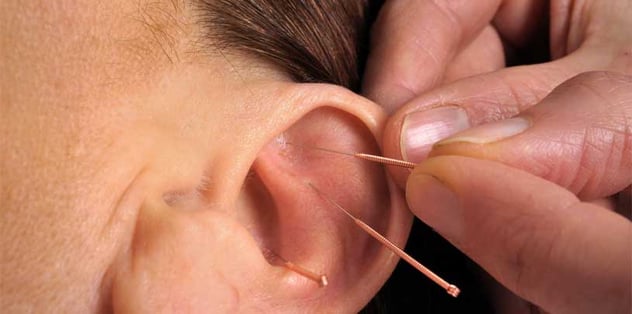
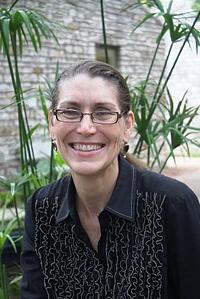 acupuncture and psychotherapy practice in south Austin. In her private practice, Claudia typically will treat about 10 patients per week who are recovering persons, as well as others with mental health diagnoses. “The goal of acupuncture is always to restore balance, flow, and maximum functioning.”
acupuncture and psychotherapy practice in south Austin. In her private practice, Claudia typically will treat about 10 patients per week who are recovering persons, as well as others with mental health diagnoses. “The goal of acupuncture is always to restore balance, flow, and maximum functioning.”